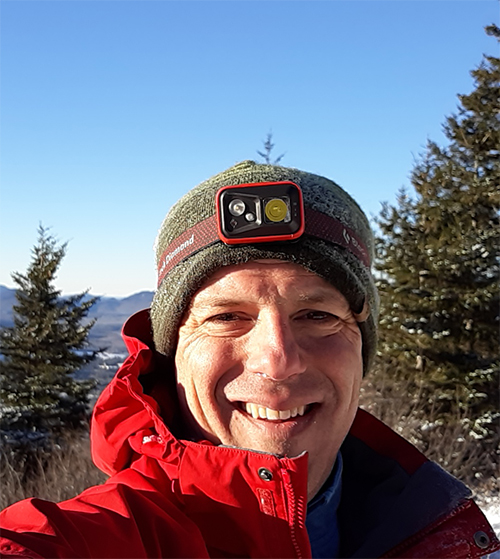
Tahawus: A New and Improved Ghost Town
By: Justin Levine - Adirondack Council Communications and Outreach Assistant
Thursday, August 19, 2021
I first visited the Adirondack ghost town of Adirondac sometime in the early 1990s. My dad loaded me, my older brother, my uncle, and my mom’s cousin into our car for the trek. We drove up Route 30 through Speculator and Long Lake before making our way through Newcomb and out to the Tahawus area. I remember driving slowly to the trailhead, looking out the windows at the decrepit buildings that were falling in on themselves and which seemed to be right on the side of the road. I didn’t know it at the time, but that visit would eventually turn into a life-long love of Tahawus, Adirondac, and all the history packed into this abandoned town.
My mom’s family is from this area, with my great grandfather, grandfather, several great uncles, and an uncle all working in the mines here. It’s rumored that my great-grandmother was Valedictorian of her graduating class at the Newcomb School, though it’s also said that she was the sole graduate that year - I have no idea if it’s true, but it’s a good story.
The Tahawus area was home to mining and lumbering operations for well over a century, and also served as a luxury resort for the mine higher-ups and their well-to-do friends. Also known as Adirondac, the town only exists in memory now, though some pieces of history have been restored and preserved.

Needless to say, I was excited to take a recent trip down to Tahawus to check out the improvements made this summer by the Open Space Institute (OSI), which purchased the area from Houston-based National Lead Industries in 2003. This property included landmarks like the massive furnace, Lake Henderson, the ghost town, and the McNaughton Cottage, where President Teddy Roosevelt was staying when he lit out on his midnight ride to the presidency in 1901. After buying the land from the mining company, OSI sold the bulk of the land to the state to be added to the Forest Preserve. However, OSI held on to the area along the road, including the still-standing structures.

This is a great case study in how public/private partnerships can benefit the Adirondacks, protecting the resource while also improving access. The Adirondack Council is proud to support these kinds of projects, and until the state Department of Environmental Conservation and Adirondack Park Agency get increased budgets and more employees, private stewardship of some resources is essential.
The work that OSI has done to improve the trailhead is to be lauded. What used to be a ragged, uneven, and relatively small dirt parking area has been replaced by a large but unobtrusive parking lot, complete with handicap-accessible spots and a crushed gravel road that improves accessibility. There is a gate at McNaughton Cottage, and the road from there to the old trailhead is now level and compact. On top of that, some of the historical signs that tell the story of the area have been moved onto the road, so they’re easy to read.

After checking out the improvements, I grabbed my pack canoe and carried it less than half a mile to Lake Henderson. I’d walked out to the lake before but never paddled. This lake is fed by numerous small streams, including Feldspar Brook, which flows out of Lake-Tear-of-the-Clouds and into Henderson Lake. The lake’s spillway flows for a short distance until it joins forces with the Opalescent River. At this point, it officially becomes the Hudson River and flows 315 miles to New York City.
I put the canoe in and paddled up the narrow bay and into the main body of the lake, where the first thing I saw was a loon choking down a medium-sized fish. I was also kind of surprised to see numerous other paddlers, including a tandem canoe, several kayaks, and another pack canoe plying the waters. Henderson Lake is rather large and I only interacted with one other paddler, so despite the numbers, it did not seem crowded at all.

I took in the sights of the High Peaks and birds and eventually found a small area protected from the wind where I could sit on some rocks and have a snack. It was wildly peaceful, which is a hard feeling to achieve or describe.
After exploring the lake for a while, I paddled back to the dam and took my canoe out of the water. I went for a swim in the cool waters and then began walking back out to the parking lot. On my way, I saw quite a few people bringing boats out to the lake (including a gorgeous guideboat), as well as families just out for a stroll on the revamped road. It was great to see so many people taking advantage of all the options and enjoying both the nature and history of the Adirondacks.
The Adirondack Council is a proud Community Partner of the Leave No Trace Center for Outdoor Ethics. Please recreate responsibly, and help us protect the Adirondack Park for future generations.

Justin Levine joined the Council staff in 2021 as the Communications and Outreach Assistant. He previously worked as a regional marketing manager for the Regional Office of Sustainable Tourism and was an award-winning journalist and photographer for the Adirondack Daily Enterprise and Lake Placid News. Since graduating from Paul Smith’s College in 2004, Justin has worked in the environmental field in various roles in both the Adirondacks and Florida. When not working, Justin loves spending time with his family, running, and doing all the outdoor things the Park has to offer.




